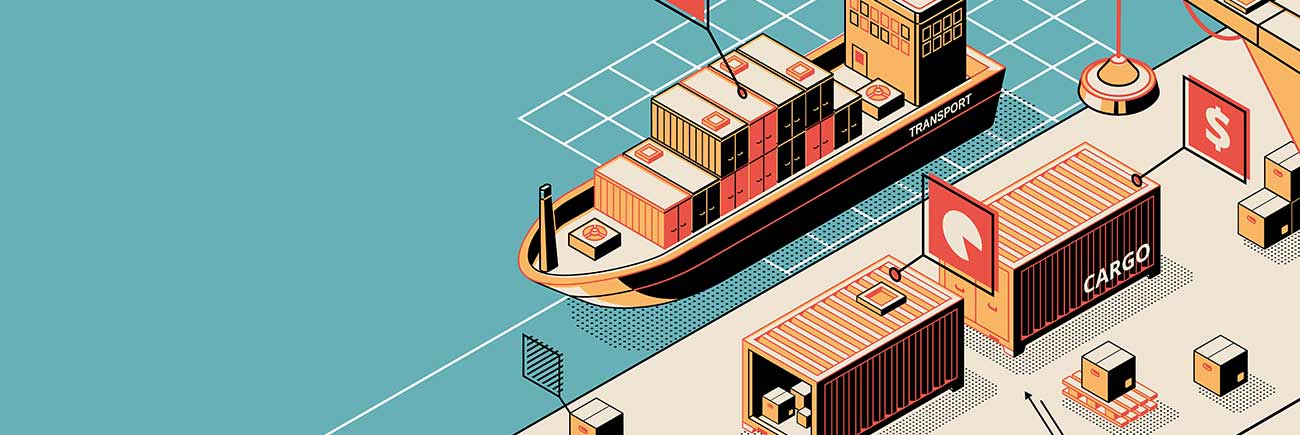
22 Mar Adherence to FAL Convention – The IMO Mandate to 360-degree Digitisation in Maritime
International shipping requires a unified, global approach to facilitation in case it wants to thrive in this highly competitive landscape. This need led to the foundation of an international treaty called the FAL Convention, active since 1967 but kept continually amended and updated by Governments at the FAL Committee of IMO – which usually meets every year, at least once, at IMO’s London Headquarters. It contains standards, recommended practices, and rules needed for simplifying formalities, documentary requirements, and procedures on ships’ arrival, stays, and departure.
FAL Forms, standardised FAL documentation developed under the FAL Committee, helps the authorities and Governments along with all the stakeholders to get simplified operations. Since April 2019, it has been mandated by the FAL Convention for ships and ports to exchange FAL data electronically while encouraging the use of the so-called “single window” concept.
It allows all the agencies and authorities involved in the process to exchange data via a single point of contact. Also, the Explanatory Manual to the Convention on Facilitation of International Maritime Traffic provides proper guidance and interpretation of the provisions in the annexe of the FAL Convention. It not only assists in interpreting the legal text of the provisions but also provides for a greater understanding of the Convention.
The FAL Convention: need and relevance
30% of ports across the globe have implemented the mandatory IMO convention which made it necessary to introduce electronic information exchange between ships and ports to facilitate clearance processes. This legislation is known as the FAL Convention and was signed-off by the IMO and its member states which got implemented in April 2019, with countries that gave a 12-month implementation window.
Most of the FAL-compliant ports are in Europe since the convention had been incorporated into EU legislation. However, in many other parts of the world, there is little enforceability and confusion about who is responsible for overseeing implementation. Though it does not overshadow the fact that this legislation is mandatory as part of the country’s IMO membership.
What is holding back the 70%?
The Convention focuses more on how to prevent unnecessary delays in maritime traffic so that it helps to aid co-operation between Governments while securing the highest practicable degree of uniformity in formalities and other procedures. It specifically helps you reduce the number of declarations that can be required by public authorities. There is no denying that most human activities are regulated either by precedent, convention, or regulation and these regulations are essential.
Yet sometimes, they are often conceived as not only unnecessary but also as a significant burden on the activities they are meant to control. Few of such activities have been more subject to over-regulation as compared to international maritime transport which eventually acts as a factor holding back the majority of ports.
A potential reason for the cause: the international nature of shipping since countries with developed customs, immigration, and other standards and a ship journeying several countries during the course of a voyage, are most likely to be presented with a number of forms to fill in. Most of these forms often ask for exactly the same information, in one way or other, but in a slightly different way. It’s not only vague but tedious too.
How can the remaining 70% adhere to FAL Convention?
A Port Community System (PCS) can play a huge role in helping ports adhere to the FAL Convention since it helps you integrate the electronic flow of trade-related documents or information while functioning as the centralized hub for the ports in the country for exchanging electronic messages in a secure manner. A Port Community System also works for other stakeholders like shipping lines or agents, surveyors, inland container depots, customs brokers, importers, exporters, railways or CONCOR, government regulatory agencies, stevedores, banks, container freight stations, etc. For instance, take a look at the following use cases:
- International Governments/National Authorities: Helping them to fulfil the requirement of electronic data exchange, which allows the concerned authorities to become entitled to crucial details and information as per their need.
- Public authorities: Public authorities that are responsible for shipping and transportation face the problem of duplication of data. The FAL Convention can help them eradicate this problem with its systemized flow of information, documentation of arrival, and stay and departure of ships.
- Shipping and Logistics organisations: By implementing a Port Community System and adhering to the FAL Convention, one can achieve uniformity in the transportation of cargo which will make the cross-border trade simpler and secure. It also helps you build a chance of maintaining a logistical chain for single portal data exchange while reducing the administrative burden simultaneously.
Read More on Port Community System and Container Digital Exchange for Tuticorin Port in India
Conclusion
Single Window or Port Community System development, led by technology, enables FAL to be regulated on the lines of the electronic exchange which will encourage the Governments to exchange data at a single data repository.
It not only guarantees efficient transportation of international maritime logistics but also takes care of stakeholders, administrative authorities for logistics and shipment, and public establishments, making a viable display of information. There are also new regulations in line that will strengthen the seafarer’s security ensuring that there will be no discrimination based on gender, colour, race, sex, or creed.

